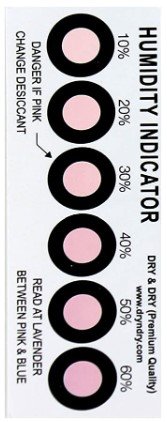I have avoided them because of the "recharge" aspect.
There is no easy way to know when the desiccant material is saturated and needs to have the moisture baked out. Maybe precision weighing? So you end up with a maintenance chore where the necessary schedule is unknown and probably changes with the seasons. More desiccant means less frequent maintenance but again you don't really know how much more or how less frequent. Adding a humidity meter (hygrometer) to the container might be useful here.
A better solution, IMO, is a heater rod like
https://www.libertysafe.com/products/dry-rod-dehumidifier The idea of these is to raise the temperature inside the safe to a point where humidity and condensation are no longer a concern. My gun safe, in fact, has a hole in the bottom specifically intended for the power cord to a heater rod.
It sounds like you are working with smaller containers, but this is hardly a new problem, so some internet searches might offer a solution for you.

